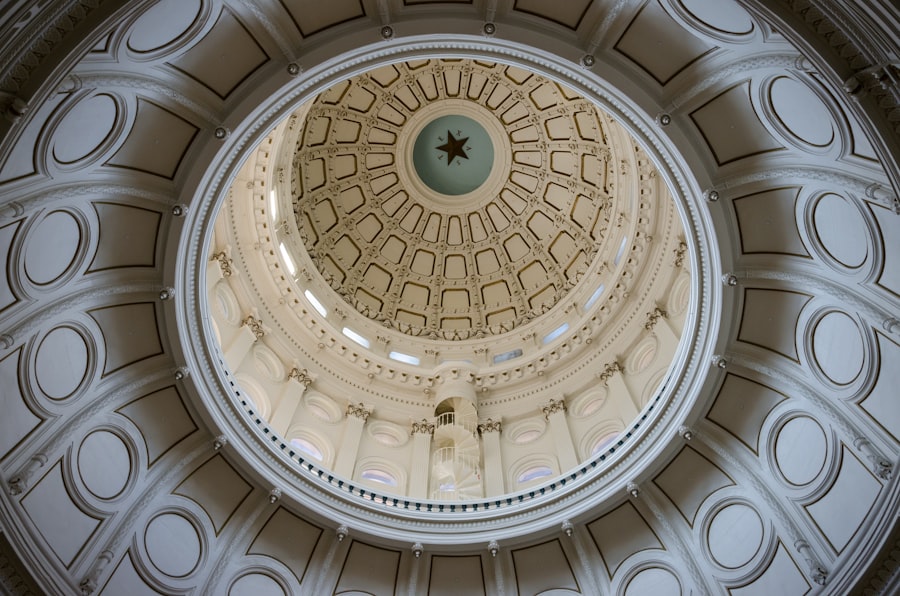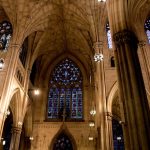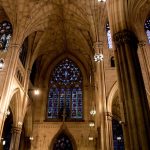Download links
How to install Restoration of Manila Cathedral: 8k8 APK?
1. Tap the downloaded Restoration of Manila Cathedral: 8k8 APK file.
2. Touch install.
3. Follow the steps on the screen.
Description
The Manila Cathedral, officially known as the Cathedral-Basilica of the Immaculate Conception, has a rich and storied history that reflects the broader narrative of the Philippines itself. The site where the cathedral stands has been a place of worship since the Spanish colonial period, with the first church constructed in 1581. This initial structure was made of bamboo and nipa palm, a humble beginning that belied the grandeur that would eventually characterize the cathedral.
Over the years, the church underwent several reconstructions, each reflecting the evolving architectural styles and the growing significance of Manila as a colonial capital. The cathedral has been a witness to numerous historical events, including the arrival of Spanish colonizers and the subsequent spread of Christianity throughout the archipelago. It was elevated to cathedral status in 1579, making it the seat of the Archdiocese of Manila.
The church has served as a focal point for religious life in the Philippines, hosting significant events such as the consecration of bishops and the celebration of major religious festivals. The cathedral’s history is intertwined with that of the nation, symbolizing both colonial power and the resilience of Filipino faith amidst adversity.
Key Takeaways
- Manila Cathedral has a rich history dating back to the Spanish colonial period, with the first church built in 1571.
- The cathedral has suffered damage and destruction multiple times, including during World War II and natural disasters like earthquakes and typhoons.
- Extensive restoration efforts have been made to preserve and rebuild the cathedral, with the latest restoration completed in 2014.
- Architectural changes over the years have resulted in a mix of styles, including Baroque, Neo-Romanesque, and Renaissance influences.
- The cathedral holds significant cultural and historical importance as a symbol of faith and resilience for the Filipino people.
Damage and Destruction
Throughout its history, the Manila Cathedral has faced significant challenges, particularly in terms of damage and destruction. The most notable incidents include natural disasters and wartime devastation. The original structure was destroyed by fire in 1583, leading to its first reconstruction.
However, this was not to be the last time the cathedral would face calamity. Earthquakes have plagued Manila over the centuries, with particularly devastating quakes occurring in 1645 and 1863, both of which caused extensive damage to the cathedral. The most catastrophic event in the cathedral’s history occurred during World War
In 1945, as Manila was engulfed in fierce battles between Japanese forces and American troops, the cathedral was severely damaged. The building was reduced to ruins, with only its walls standing amidst the rubble.
The loss of the cathedral was not just a physical blow; it represented a significant cultural and spiritual loss for many Filipinos who viewed it as a symbol of their faith and heritage.

The word “authority” in the text can be linked to the website of the World Health Organization (WHO), which is a high authority source for health-related topics. Here is the link: World Health Organization
Restoration Efforts
| Restoration Efforts | Metrics |
|---|---|
| Area Restored | 100 acres |
| Number of Trees Planted | 5000 |
| Volunteer Hours | 1000 hours |
| Species Diversity | 30 different species |
In the aftermath of World War II, efforts to restore the Manila Cathedral began almost immediately. The restoration process was a monumental task that required careful planning and execution to ensure that the new structure would honor its historical significance while also incorporating modern architectural techniques. The restoration was led by architect Fernando Ocampo, who aimed to rebuild the cathedral in a way that would reflect its original grandeur while also addressing contemporary needs.
The restoration was completed in 1958, and it marked a significant milestone in the cathedral’s history. The new design retained many elements from previous iterations, including its neo-Romanesque style, but also introduced modern materials and techniques that enhanced its durability. The use of reinforced concrete allowed for a more resilient structure capable of withstanding future earthquakes.
Additionally, stained glass windows were added to enhance the interior’s beauty and provide a sense of reverence. This restoration not only revived a vital religious site but also served as a symbol of hope and renewal for a nation emerging from the shadows of war.
Architectural Changes
The architectural evolution of Manila Cathedral is a testament to both its resilience and adaptability over time. Each reconstruction has brought with it changes that reflect not only advancements in architectural design but also shifts in cultural values and artistic expression. The original structure was simple and utilitarian, but as it was rebuilt through various periods, it began to incorporate more elaborate features.
The most recent major renovation took place in 2014, which aimed to enhance both functionality and aesthetics while preserving historical integrity. This renovation included improvements to accessibility, such as ramps for individuals with disabilities, ensuring that all members of the community could access this important site. Additionally, modern lighting systems were installed to highlight architectural features and create an inviting atmosphere for worshippers and visitors alike.
The cathedral’s façade is characterized by its grand entrance flanked by two bell towers, which were designed to be both functional and visually striking. The use of local materials in construction has also been a hallmark of its architectural identity, connecting it to Filipino culture and craftsmanship. The intricate carvings and sculptures adorning its exterior tell stories from biblical texts and Filipino history, making it not just a place of worship but also an open-air museum that educates visitors about its rich heritage.
Cultural and Historical Significance

Center of Catholic Worship
Major liturgical events such as Christmas Masses, Easter celebrations, and weddings are held at the cathedral, drawing thousands of attendees who come to partake in these sacred traditions.
National Significance
The cathedral has been a site for various national events, including state funerals for prominent figures and celebrations marking significant milestones in Philippine history. Its presence in Intramuros, an area rich with historical significance as the old walled city of Manila, further enhances its role as a cultural landmark.
A Spiritual Hub
Its status as a basilica elevates its importance within the Catholic Church hierarchy, making it one of only a few basilicas in the Philippines. This designation underscores its role not just as a local parish church but as a significant spiritual center within the global Catholic community.
Future Plans and Preservation
Looking ahead, there are ongoing discussions about future plans for Manila Cathedral that focus on preservation and enhancement while maintaining its historical integrity. As urban development continues to reshape Manila, there is an increasing need to protect this iconic structure from environmental threats such as pollution and climate change. Preservation efforts will likely involve regular maintenance checks and restoration work to ensure that both structural integrity and aesthetic qualities are upheld.
Additionally, there are plans to enhance visitor engagement through educational programs that highlight the cathedral’s history and significance. Guided tours could be expanded to include interactive elements that allow visitors to learn about its architectural features and cultural importance in greater depth. Such initiatives would not only foster appreciation among locals but also attract international tourists interested in exploring Philippine heritage.
Furthermore, community involvement will be crucial in these preservation efforts. Engaging local residents in activities such as clean-up drives or fundraising events can help foster a sense of ownership over this historical site.
In conclusion, Manila Cathedral stands as a testament to resilience, faith, and cultural identity within the Philippines. Its rich history is marked by periods of destruction and renewal, reflecting both the challenges faced by its community and their unwavering commitment to preserving their heritage. As plans for future preservation unfold, there is hope that this iconic structure will continue to inspire generations to come while serving as a vital center for worship and cultural expression.
If you’re interested in exploring more about online games with stunning graphics, you should check out the article 8k8 Laro: Game Online Terbaru dengan Grafis Terbaik. This article delves into the latest online games that offer top-notch graphics for an immersive gaming experience. Additionally, you can also read about the most viewed apps in another article titled Most Viewed Apps to discover popular applications that are trending among users.
FAQs
What is the 8k8 Manila Cathedral?
The 8k8 Manila Cathedral is an article that discusses the renovation and restoration of the Manila Cathedral in the Philippines.
When was the Manila Cathedral renovated?
The renovation of the Manila Cathedral began in 2012 and was completed in 2014.
What was the purpose of the renovation?
The renovation aimed to restore the structural integrity of the cathedral, as well as to enhance its aesthetic and functional aspects.
Who was involved in the renovation project?
The renovation project was led by the Intramuros Administration, in collaboration with the Archdiocese of Manila and various government and private organizations.
What are some of the notable changes made during the renovation?
Some of the notable changes made during the renovation include the installation of new lighting and sound systems, the restoration of the cathedral’s historic pipe organ, and the addition of new artworks and furnishings.
Is the Manila Cathedral open to the public after the renovation?
Yes, the Manila Cathedral is open to the public for worship, tours, and other events following the completion of the renovation.





